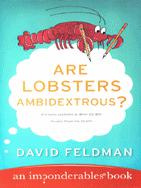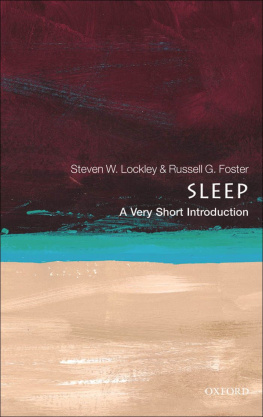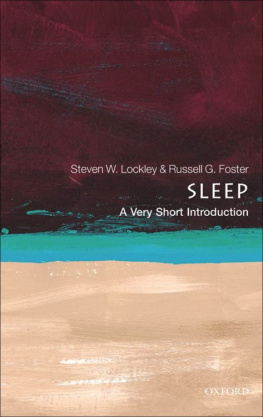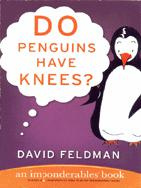WHEN DO
FISH SLEEP?
An Imponderables
Book
David Feldman
Illustrated by Kassie Schwan
For Phil and Gilda Feldman
Contents
Brand Products Sold Only at Parties? Couldnt They Make More Money by Selling the Stuff in Stores Too?
Imponderables are mysteries that cant be answered by numbers, measurements, or a trip to the reference section of your library. If you worry about why the carbons on airplane tickets are red, or why tennis balls are fuzzy, or why yawning is contagious, you have been struck by the dread malady of Imponderability.
When we wrote the first volume of Imponderables , we werent sure that there were others like us, who were committed to cogitating about the everyday mysteries of life. We neednt have worried. Most of the Imponderables in this book were submitted by readers of the first two volumes of Imponderables.
In Why Do Clocks Run Clockwise? , we introduced a new section, Frustables (short for frustrating Imponderables) and asked for your help in solving them. Your response was terrific, but we dont want you to get complacent. Weve got ten new Imponderables that we havent been able to solve.
And because so many readers offered corrections and caustically constructive comments, weve added a letter sectionwe couldnt shut you up anymore even if we wanted to.
Would you like to win a free copy of the next volume of Imponderables? If you are the first to submit an Imponderable that we use in the next book, you will not only have the relief of finally having the answer to your mystery, but also a free, autographed copy of the book (along with, of course, an acknowledgment).
The last page of the book tells you how to get in touch with us. But for now, sit back and enjoy. You are about to enter the wonderful world of Imponderability.


Because there are humans around to be awakened, of course. Does anyone really believe that roosters crow when they are by themselves? Nah! Actually, they speak perfectly good English.
Ornithologists dont buy our common-sense answer. They insist that crowing maps territory (a euphemism for Get the hell out of my way and dont mess with my womenthis is my coop). In the spirit of fair play, well give the last world to one of those nasty ornithologist types (but dont believe a word she says), Janet Hinshaw, of the Wilson Ornithological Society:
Most of the crowing takes place in the morning, as does most singing, because that is when the birds are most active, and most of the territorial advertising takes place then. Many of the other vocalizations heard throughout the day are for other types of communication, including flocking calls, which serve to keep members of a flock together and in touch if they are out of sight from one another. Submitted by Rowena Nocom of North Hollywood, California.
This Imponderable was sent in by reader Jane W. Brown in a letter dated May 12, 1986. Jane was clearly a discerning seer of emergent popular culture trends:
Staying in less than deluxe lodgings has led me to wonder why, and how, the custom of folding under the two outside corners on a roll of bathroom paper was begun. This operation creates a V on the last exposed edge of the tissue. I first noticed this bizarre sight in a LaQuinta Motor Inn. Then I stayed in some Holiday Inns while on a business trip. There, too, the bathroom paper had been tediously tucked in on the outside edges, the large V standing out, begging for attention. Recently, I upgraded my accommodations and spent several nights in a Marriott and an Intercontinental. Right: the bathroom paper was also arranged in this contorted fashion. Why?
Jane, enterprisingly, included an audiovisual aid along with her letter, as if to prove she wasnt crazy: a specimen of the mysterious V toilet paper. Since Jane wrote her letter, the folded toilet paper trick has run rampant in the lodging industry.
We contacted most of the largest chains of innkeepers in the country and received the same answer from all. Perhaps James P. McCauley, executive director of the International Association of Holiday Inns, stated it best:
Hotels want to give their guests the confidence that the bathroom has been cleaned since the last guest has used the room. To accomplish this, the maid will fold over the last piece of toilet paper to assure that no one has used the toilet paper since the room was cleaned. It is subtle but effective.
Maybe too subtle for us. Call us sentimental old fools, but we still like the old Sanitized for Your Protection strips across the toilet seat.
Submitted by Jane W. Brown of Giddings, Texas.
On a long trek down our illustrious interstate highway system, we will do anything to alleviate boredom. The roadway equivalent of reading cereal boxes at breakfast is obsessing about odometers and fuel gauges.
Nothing is more dispiriting after a fill-up at the service station than traveling sixty miles and watching the gas gauge stand still. Although part of us longs to believe that our car is registering phenomenal mileage records, the other part of us wants the gauge to move to prove to ourselves that we are actually making decent time and have not, through some kind of Twilight Zone alternate reality, actually been riding on a treadmill for the last hour. Our gas gauge becomes the arbiter of our progress. Even when the needle starts to move, and the gauge registers three-quarters full, we sometimes feel as if we have been traveling for days.
How nice it would be to have a gauge move steadily down toward empty. Just as we are about to give in to despair, though, after the gauge hits half-full, the needle starts darting toward empty as if it had just discovered the principle of gravity. Whereas it seemed that we had to pass time zones before the needle would move to the left at all, suddenly we are afraid that we are going to run out of gas. Where is that next rest station?
There must be a better way. Why dont fuel gauges actually register what proportion of the tank is filled with gasoline? The automakers and gauge manufacturers are well aware that a half-full reading on a gas gauge is really closer to one-third full, and they have reasons for preserving this inaccuracy.
The gauge relies upon a sensor in the tank to relay the fuel level. The sensor consists of a float and linkage connected to a variable resistor. The resistance value fluctuates as the float moves up and down.
If a gas tank is filled to capacity, the liquid is filled higher than the float has the physical ability to rise . When the float is at the top of its stroke, the gauge will always register as full, even though the tank can hold more gasoline . The gauge will register full until this extra gasoline is consumed and the float starts its descent in the tank. At the other end of the floats stroke, the gauge will register as empty when the float can no longer move further downward, even though liquid is present below the float .
We asked Anthony H. Siegel, of Ameteks U.S. Gauge Division, why sensors arent developed that can measure the actual status of gasoline more accurately. We learned, much as we expected, that more precise measurements easily could be produced, but the automakers are using the current technology for our own good:
Vehicle makers are very concerned that their customers do not run out of fuel before the gauge reads empty. That could lead to stranded, unhappy motorists, so they compensate in the design of the float/gauge system. Their choice of tolerances and calibration procedures guarantees that slight variations during the manufacturing of these components will always produce a combination of parts which falls on the safe side. The gauge is thus designed to read empty when there is still fuel left.
Next page
















